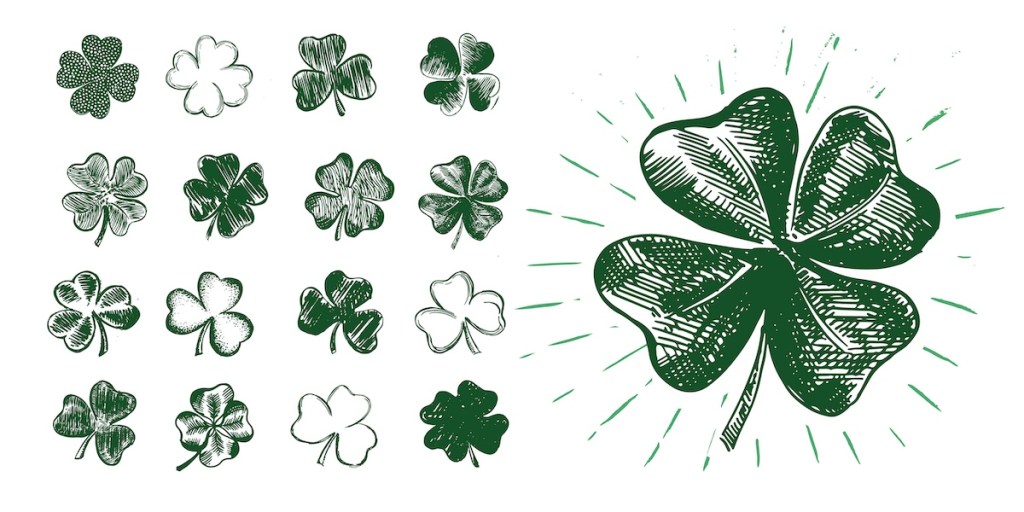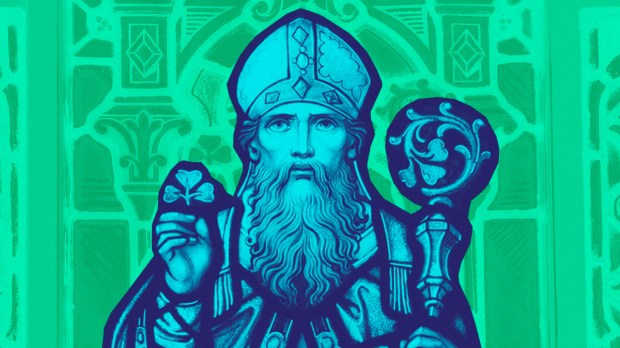While we associate St. Patrick’s Day with vibrant shades of green, historical evidence suggests a different palette for Ireland’s patron saint. The Huntington Library in California, for example, houses a rare 13th-century manuscript, the famed Legenda Aurea. In it, the earliest known depiction of St. Patrick is found.
Surprisingly (for us), he’s dressed in a blue robe – and not in the iconic green we see today.
In this tiny portrait, St. Patrick is shown meeting with the High King of Ireland. The image appears to show Patrick stabbing the king’s foot with his staff. And whereas some say this might have been a sort of accident, various hagiographies say the then High King, Loégaire mac Néill, was in fact Patrick’s adversary.
The famed Life of Saint Patrick authored by Muirchú, the monk and historian who credits Patrick with the conversion of Ireland, actually says that was the case.
The manuscript is rarely displayed, making this image of St. Patrick all the more special. Careful conservation techniques, including controlled lighting and environment, have kept the colors remarkably intact. Medieval manuscripts often used pigments derived from natural sources – reds from plants and blues from minerals such as azurite. The most expensive works might feature ultramarine blue, made from precious lapis lazuli – a mineral exceptionally hard to find, and thus incredibly expensive.

Theories
So why did green become the color synonymous with St. Patrick? While the exact origin is unknown, there are several theories.
Some historians point to Ireland’s nickname, “The Emerald Isle,” due to its lush landscapes. Others suggest that the color gained prominence during Irish rebellions in the 17th and 18th centuries, when green became associated with nationalism.
The shamrock, often associated with St. Patrick’s explanation of the Trinity, may also have played a role in reinforcing the symbolism of green.
Some other legends claim that green makes one invisible to demons – and leprechauns!
Whether depicted in blue or green, St. Patrick’s legacy as a central figure in Irish history, and in the universal tradition of the Catholic church, surely endures.
The Huntington’s rare manuscript provides a unique window into his early depictions, showing that even long-standing traditions can have unexpected origins.
To see the original manuscript, you can visit the Huntington Library Flickr account.



